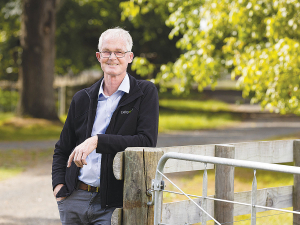OPINION: When the primary sector took on the challenge of an emissions pricing alternative, there was a clear goal – to secure the best possible system for farmers and the climate.
In 2019 the Government legislated to put agriculture into the Emissions Trading Scheme (ETS). We believed that was a poor option for the primary sector and for New Zealand.
We approached the Government to have the option to come up with a better proposal that was fairer, more practicable for farmers and would deliver better outcomes.
What followed was significant discussion between sector partners to secure that alternative, which would keep the primary sector out of the costly ETS. That sector proposal, He Waka Eke Noa, remains the best option in our view, and DairyNZ puts its weight behind it.
In our view the Government, in response to our proposal, has made significant changes to He Waka Eke Noa that have undermined farmer confidence and potentially put the finely balanced cross-sector consensus at risk.
We do not accept that these significant changes by Government are necessary, and believe they cut to the core of the He Waka Eke Noa partnership.
I’ve heard from many farmers in recent weeks who are frustrated and seeking clarity on what the government’s proposal might mean for them. They’re worried this will have significant implications for their families, their businesses and their communities. They’re also worried about the future of farming in New Zealand.
As a farmer, I share these concerns. The last thing anyone wants to do is lock in a system that we aren’t prepared to live with. So, with our original goal in mind – to secure the best solution for farmers – we continue to work alongside our partners to secure the right outcomes.
DairyNZ will never accept a system that threatens the viability of farming businesses and rural communities in New Zealand. There are some key differences to address before we can land that acceptable system.
Seven significant setbacks
The Government’s changes significantly tipped the balance of what we view as an effective emissions pricing solution.
The Government’s proposal differs from the He Waka Eke Noa recommendations in seven ways.
Governance
It removes sector influence over price-setting and governance. The agriculture sector and farmers should be more than just consulted on price-setting and the re-investment of the levy back into the agriculture sector. We believe that by the sector being involved in that process we will get better and fairer outcomes.
Sequestration
The Government’s proposal slashed the sequestration categories, reducing the recognition and reward farmers will get for on-farm planting. Sequestration benefits deliver greater resilience to price. Like many farmers, I’ve got wetlands, shelter belts and other planting, and believe they should be counted if possible. The principle we believe is that if farmers are paying for their emissions they should also be recognised for their plantings.
Pricing
Under the Government’s proposal, ministers will set the methane price, based on advice from the Climate Change Commission. That price will be solely determined by legislated targets – failing to account for socio-economic impacts, technology availability and emissions leakage.
Potential yearly pricing for methane and nitrous oxide (linked to the ETS) will create added uncertainty for farmers.
Levy revenue
The emissions pricing system Government has proposed creates surplus levy money. Farmers should not have to pay more than is necessary to make change and fund incentives. Farmers have little say in what the levy reinvestment will look like.
Government delivery
A processor level levy is a back-up plan should the Government fail to deliver a farm-level levy in time. This creates more uncertainty for farmers and removes accountability from the Government to deliver the farmer facing levy. The agriculture sector has no say over whether the back-up option is used.
Nitrogen fertiliser
The Government has proposed two methods for pricing emissions from nitrogen fertiliser – through the ETS with a price factored into the cost of product, or as part of the farm levy. The price would be the same in both options. Money raised from pricing synthetic nitrogen through the ETS would not be reinvested into the agriculture sector, and that’s a missed opportunity.
Collectives
The Government’s proposal also means farm collectives will initially only be available for Māori agribusinesses. Other collective reporting will be explored in the future. This reduces the ability to streamline farm businesses in relation to emissions reductions and pricing.
United we stand
Primary sector partners have signalled a united determination to advocate strongly for farmers, on emissions pricing.
Recently, the leaders of DairyNZ, Beef + Lamb New Zealand (B+LNZ) and Federated Farmers met to discuss emissions pricing and reaffirm common positions between the three organisations, to enable them to move forward together and advocate strongly on behalf of farmers.
All three organisations have reaffirmed nine core principles that we will all be raising directly in our submissions and through the HWEN partnership on farmers’ behalf.
The nine principles include addressing the current methane targets, the methane price being set at the minimum required level and to give farmers certainty, levy relief options, incentivising farmers to update technology and adopt practices that will reduce emissions, and counting all sequestration that can be measured and is additive.
A united voice on emissions pricing is the best way to ensure positive policy outcomes for farmers.


















